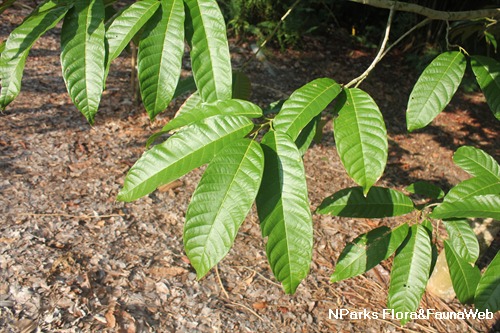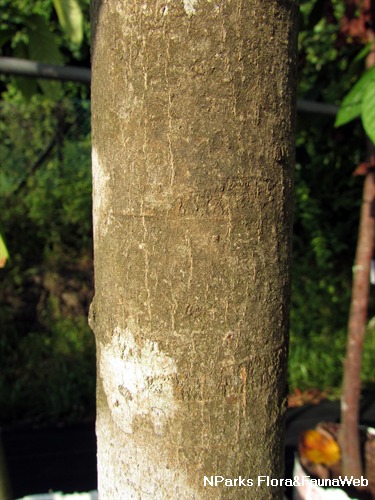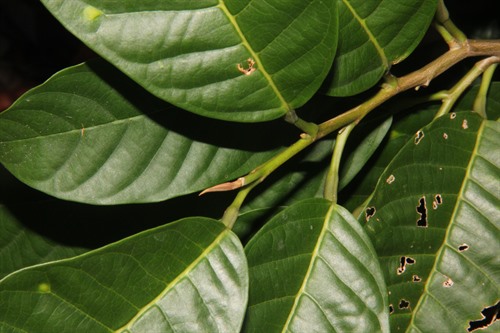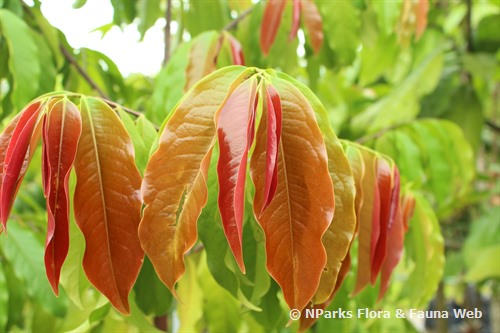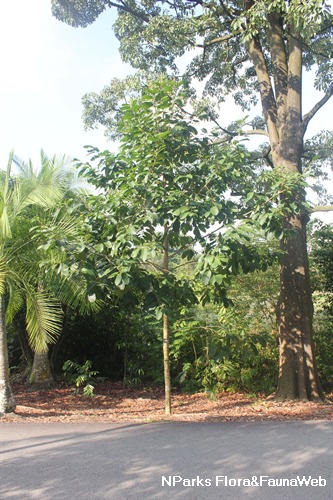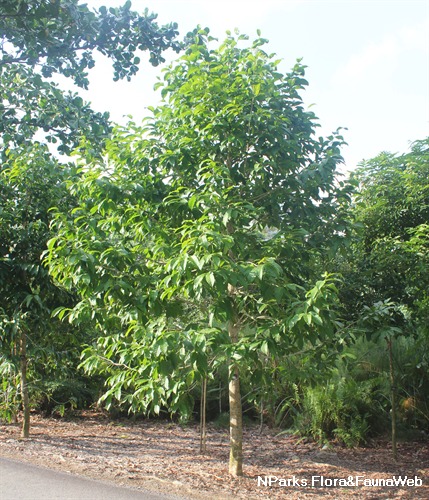
Back
Anisoptera scaphula
| Family Name: | Dipterocarpaceae |
| Synonyms: | Anisoptera glabra |
| Common Name: | Sanai, Mersawa Gajah |
Name
Classifications and Characteristics
| Plant Growth Form | Tree |
|---|---|
| Lifespan (in Singapore) | Perennial |
| Mode of Nutrition | Autotrophic |
| Plant Shape | Oval |
Biogeography
| Native Distribution | Bangladesh, Myanmar, Peninsular Malaysia, Thailand, Vietnam |
|---|---|
| Native Habitat | Terrestrial (Primary Rainforest) |
| Preferred Climate Zone | Tropical |
| Local Conservation Status | Non-native (Horticultural / Cultivated Only) |
Description and Ethnobotany
| Growth Form | A tall evergreen or semi evergreen tree of 30 to 45 m tall with girth of 3 to 4.5 m. |
|---|---|
| Trunk | Trunk is buttressed with long cylindrical bole and fissured bark. |
| Foliage | Leaves simple; alternate; petiolate; stipulate; lamina entire |
| Fruit | Fruits are winged nuts 1.6 cm diameter; calyx tube is constricted at mouth; wings are oblanceolate, 11-17 cm long and 1.5-2.5 cm wide with three prominent longitudinal veins joined at right angles by conspicuous transverse veins. |
| Ethnobotanical Uses | Timber & Products: For general light construction such as window frames, decorative panelling, ceiling, beams, rafters, house and boat building, and furniture. |
Landscaping Features
| Landscape Uses | Reforestation |
|---|
Plant Care and Propagation
| Light Preference | Full Sun |
|---|---|
| Water Preference | Moderate Water |
| Plant Growth Rate | Moderate |
| Propagation Method | Seed |
Foliar
| Foliage Retention | Evergreen |
|---|---|
| Mature Foliage Colour(s) | Green |
| Foliar Type | Simple / Unifoliate |
| Foliar Arrangement Along Stem | Alternate |
| Foliar Attachment to Stem | Petiolate |
| Foliar Margin | Entire |
| Foliage Retention Remarks | Semi-evergreen |
Non - Foliar and Storage
| Trunk Type (Non Palm) | Woody |
|---|---|
| Mature Bark Texture | Fissured |
Image Repository
Others
| Master ID | 29229 |
|---|---|
| Species ID | 3538 |
| Flora Disclaimer | The information in this website has been compiled from reliable sources, such as reference works on medicinal plants. It is not a substitute for medical advice or treatment and NParks does not purport to provide any medical advice. Readers should always consult his/her physician before using or consuming a plant for medicinal purposes. |

